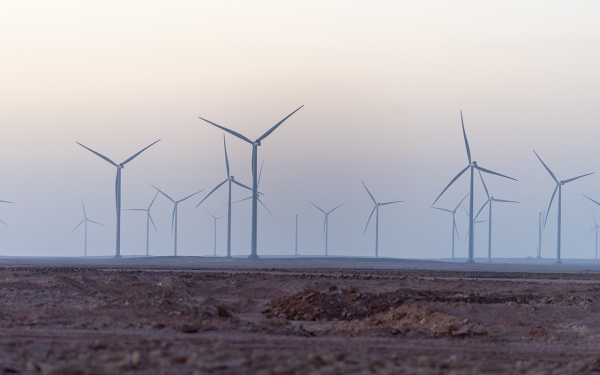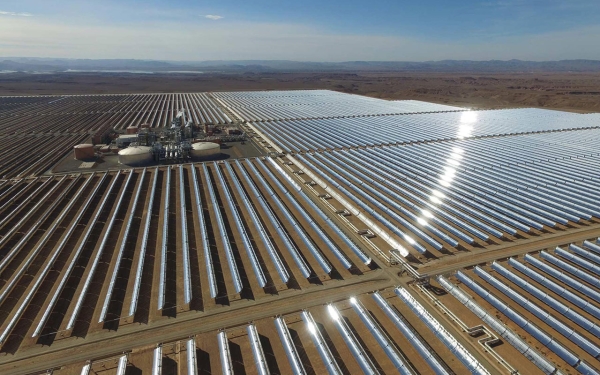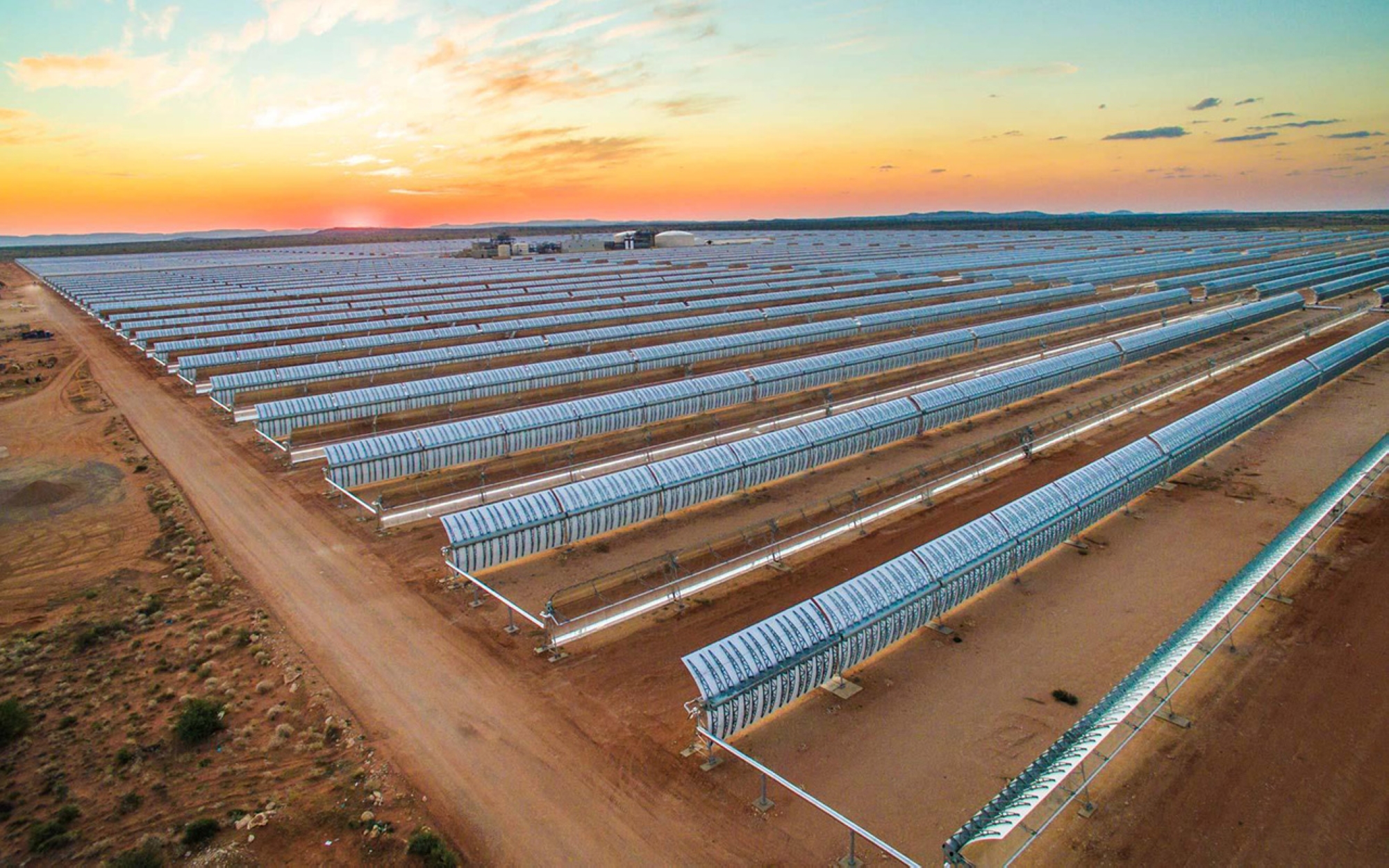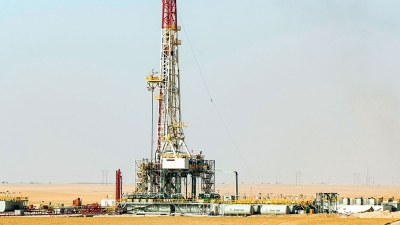



Clean Energy in the Kingdom of Saudi Arabia is one of the investment channels outlined in Saudi Vision 2030, aiming to add 9.5 GW of renewable energy in the first phase. It also aims to localize a significant portion of the renewable energy value chain, including steps, such as research, development, manufacturing, etc.
Renewable energy in the Kingdom
The Kingdom enjoys a distinctive geographic and climatic location that makes harnessing renewable energy sources economically viable and supportive of its efforts to diversify energy sources. The National Renewable Energy Program is a strategic initiative under the Custodian of the Two Holy Mosques Initiative for Renewable Energy and Saudi Vision 2030.
The program aims to increase the Kingdom's share in renewable energy production to optimal levels, achieve balance in the local energy mix, and fulfill Saudi commitments to reduce carbon dioxide emissions.
The Ministry of Energy, through the program, works on diversifying the national energy mix used in electricity production by increasing the share of gas and renewable energy sources. The Kingdom aims to achieve the optimal energy mix, the most efficient and least costly in electricity production, by replacing liquid fuels with natural gas, in addition to renewable energy sources, which will constitute approximately 50 percent of the energy mix for electricity production by 2030.
Renewable energy includes establishing a new industry for renewable energy technology and supporting the development of this promising sector by harnessing private sector investments and encouraging partnerships between the public and private sectors.
The ministry works on planning to incentivize the private sector and interested parties to invest in the renewable energy sector by creating a competitive local market for renewable energy. The Kingdom's achievement of the lowest prices globally for renewable energy projects reflects the attractiveness of this investment, as the Kingdom has achieved the most competitive prices worldwide for wind and solar energy generation, setting a global benchmark in production costs.
The Saudi Energy Minister, Prince Abdulaziz Bin Salman Bin Abdulaziz, has emphasized that "The Kingdom seeks global leadership in clean energy production through the carbon circular economy framework, in light of the world's shift towards sustainability, especially in the energy and mining sectors."
During a dialogue session at the "International Mining Conference" held at the King Abdulaziz International Conference Center in Riyadh City in January 2023, he stated, "The Kingdom is a leader in the global petroleum industry, as crude oil production in the Kingdom is among the lowest in carbon density in the world. The Kingdom has heavily invested in carbon extraction, utilization, and storage projects."
He added, "All gas generation stations will be supported by carbon capture technologies, and clean hydrogen is a focus of our investment. The Kingdom is working on establishing the world's largest clean hydrogen center."

National Renewable Energy Program (NREP)
The Kingdom launched the National Renewable Energy Program aimed at activating local sources for renewable energy production. The program achieved several objectives in its first three phases, with the renewable energy production capacity reaching approximately 4.87 GW.
The program contributed to supporting the Saudi economy and developing human capital by achieving investment expansion in new sectors, attracting both global and local corporate investments, and establishing advanced technologies and their localization.
The National Renewable Energy Program in the Kingdom is a long-term, multi-faceted program designed to achieve a balance in the electricity energy mix and fulfill the Kingdom's voluntary and nationally determined contributions to avoid carbon dioxide emissions and other greenhouse gases. Aligned with Vision 2030, the program aims to significantly increase the share of renewable energy in the Kingdom's electricity energy mix.
Operating the Red Sea project with renewable energy
The Red Sea Project operates on renewable energy, where all project facilities are fully powered by renewable energy. This includes supply of potable water, treatment of sewage water, cooling systems for approximately sixteen hotels, in addition to the international airport and infrastructure.
The destination will generate 650,000 MW of energy annually from 100 percent renewable sources. This renewable energy will reduce carbon emissions by the equivalent of 470,000 t annually.
The project includes a large battery storage facility with a capacity of up to 1,200 MW, allowing the Red Sea destination to become entirely independent from the national power station and rely fully on renewable energy.
NEOM Green Hydrogen Project
The NEOM Green Hydrogen Project aims to construct the world's largest facility for producing carbon-free green hydrogen, employing global technologies and adopting innovative modern methods.
The NEOM Green Hydrogen Project's hydrogen plant, a joint venture between "ACWA Power", "Air Products", and "NEOM", will generate up to four GW of solar and wind energy. This energy will be used to produce up to six hundred t of carbon-free hydrogen per day by the end of 2026, in the form of green ammonia. This initiative serves as a cost-effective solution for the global transportation and industrial sectors.
The factory is being constructed in the city of "Oxagon" within the "NEOM" region. NEOM Green Hydrogen Company has entered into an agreement with "Air Products" to carry out engineering, procurement, and construction works. "Air Products", as the contracting company, is responsible for executing the works and ensuring the overall integration of systems at the factory. NEOM Green Hydrogen Company has also entered into an exclusive thirty-year agreement with "Air Products", under which it will purchase all the green ammonia produced by the factory.
Related quizzes

